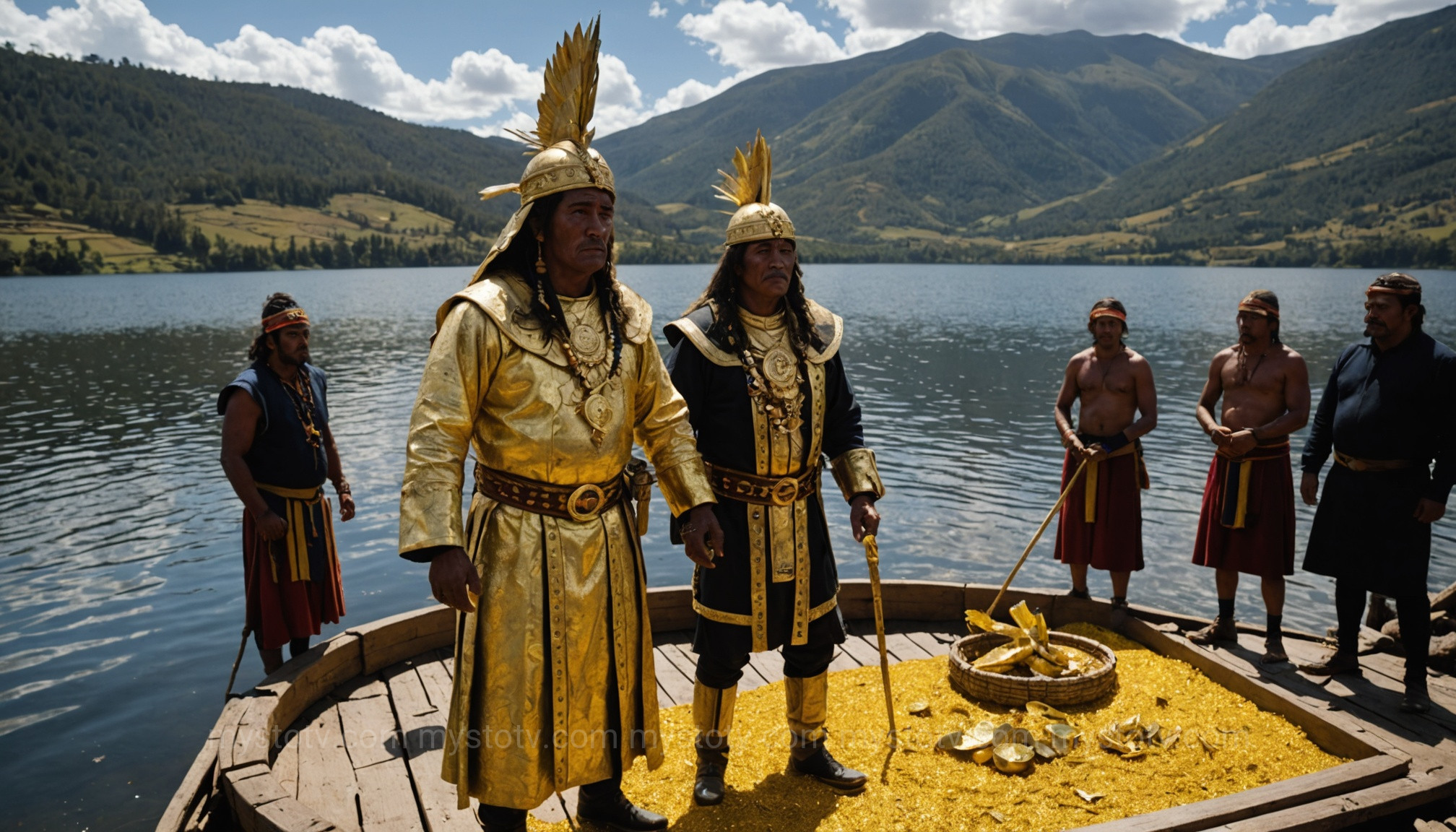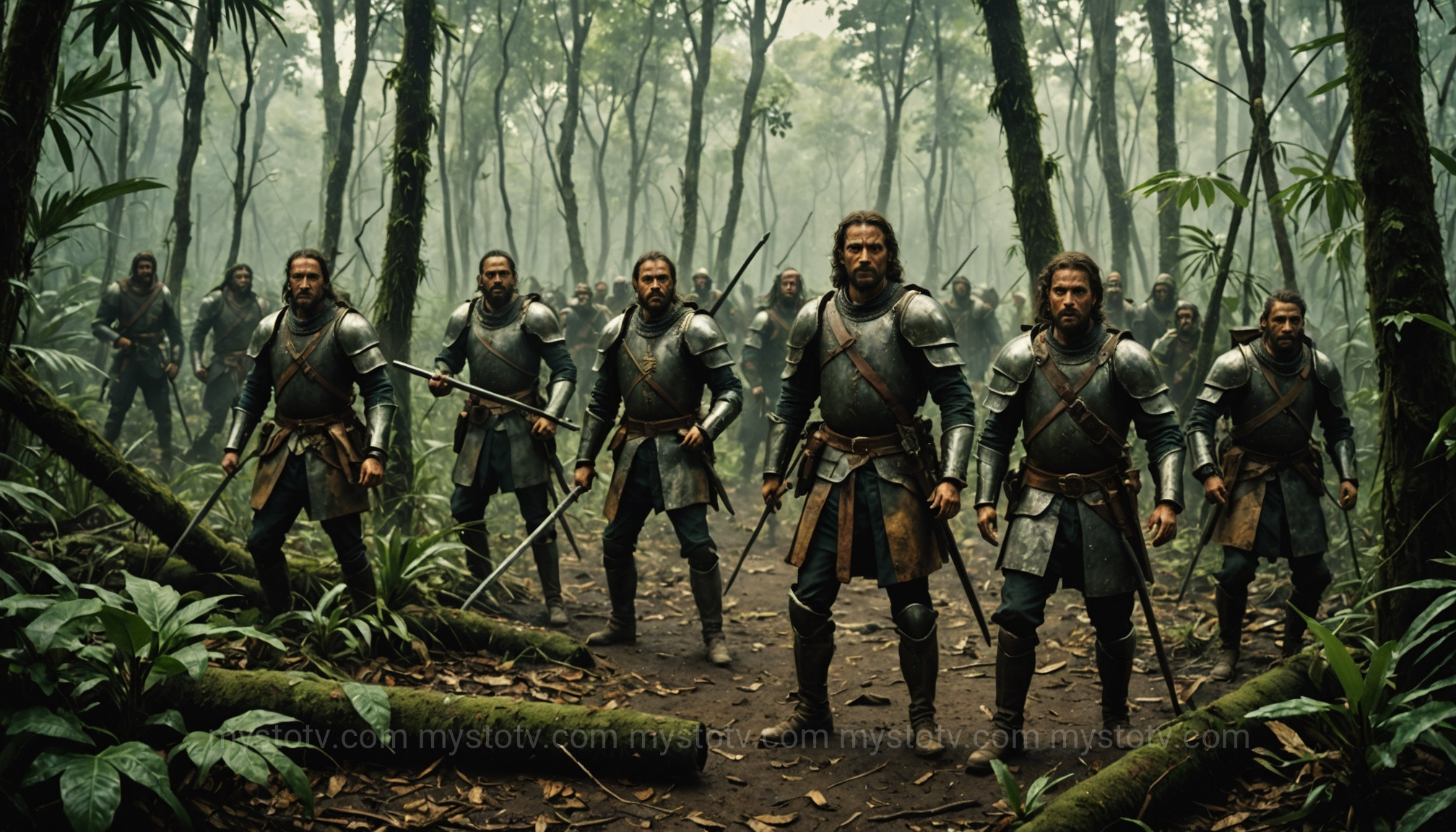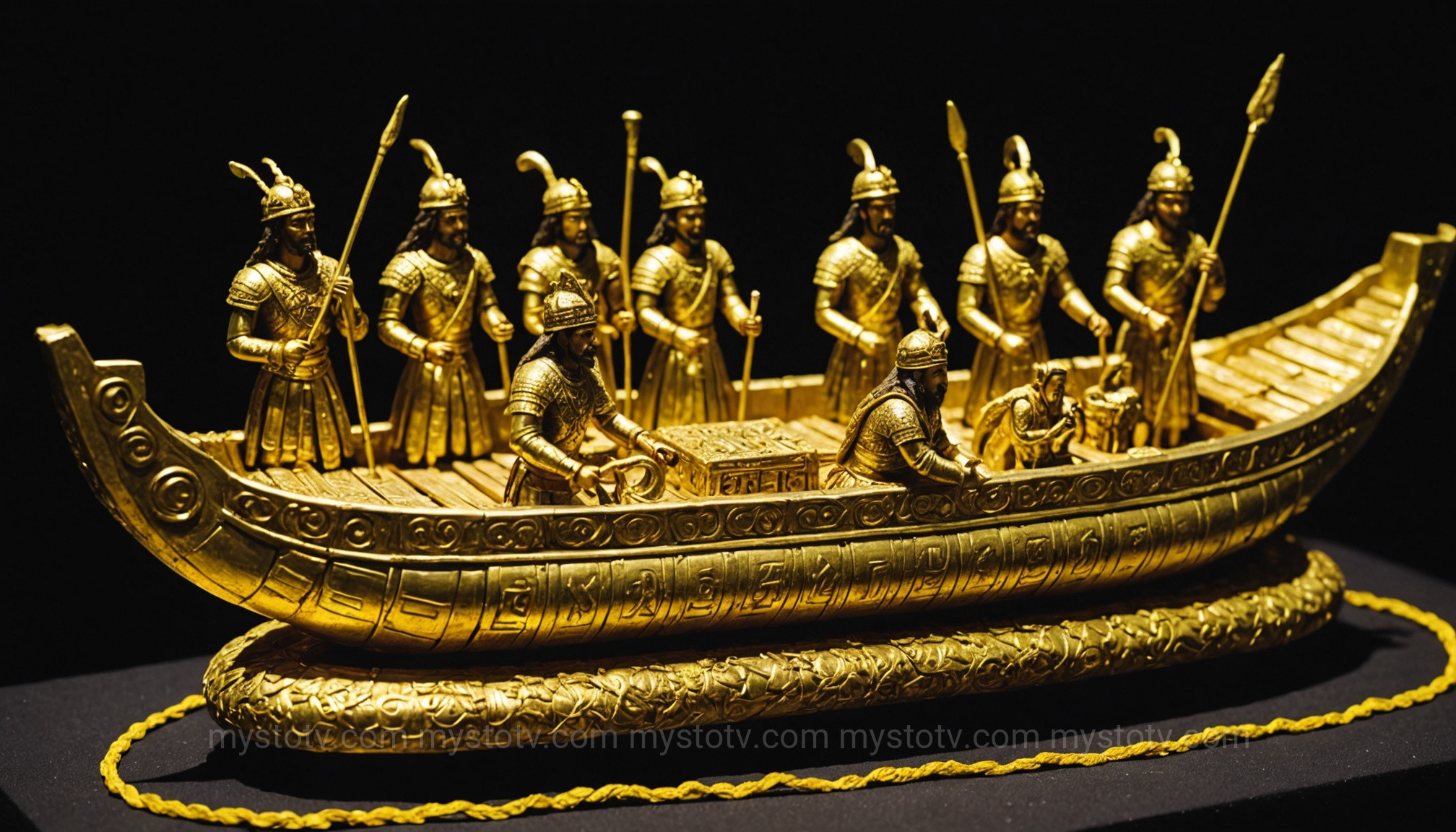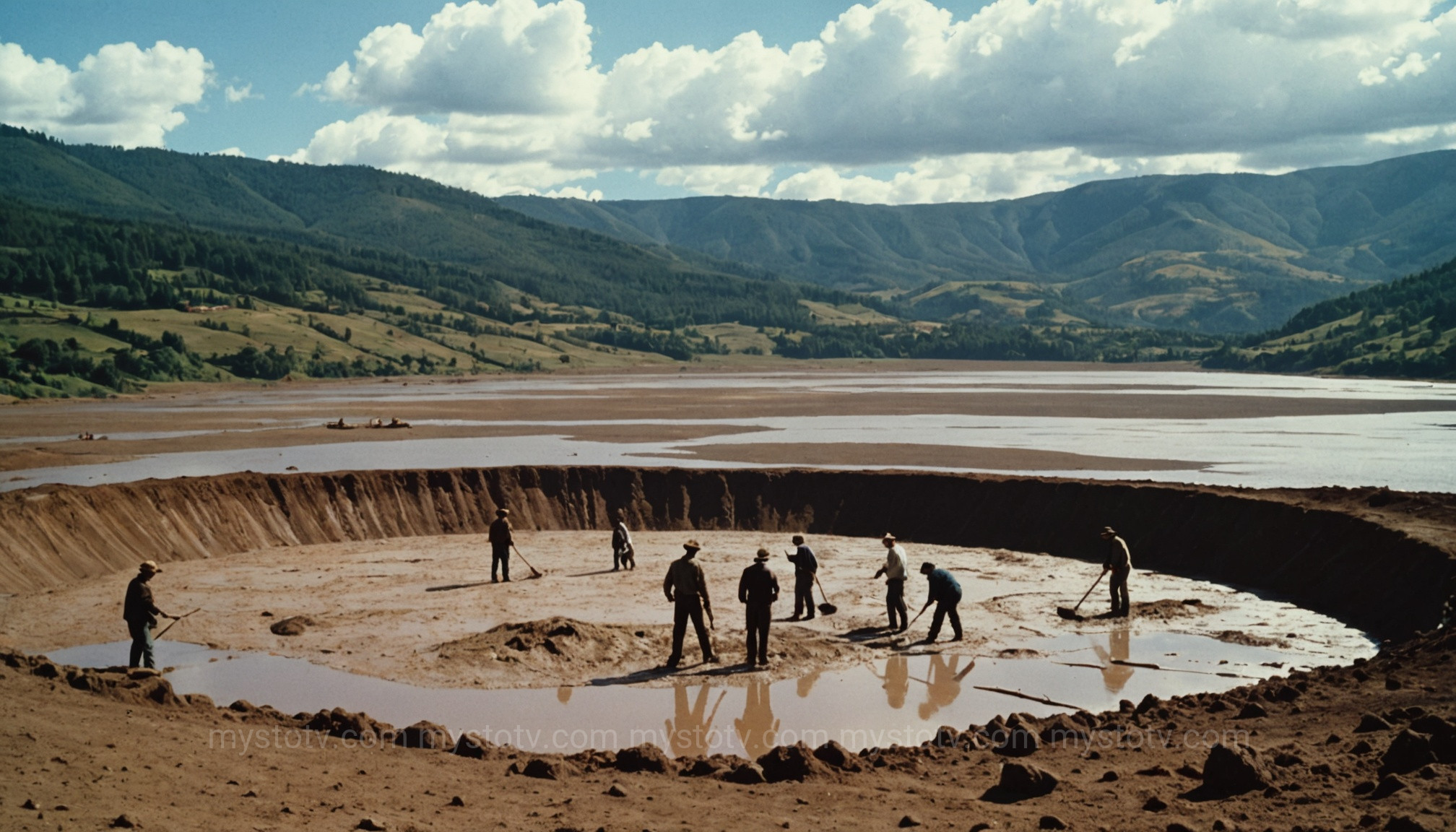I remember standing in the Gold Museum in Bogotá, surrounded by thousands of shimmering, pre-Columbian artifacts. Each piece, intricately worked by Muisca hands, told a story not of monetary wealth, but of spiritual significance. It was here, amidst the tangible history, that the fabled whispers of a golden empire felt both incredibly close and fundamentally misunderstood. This experience shifted my perspective entirely. It became clear that the real story wasn't about a lost city paved with gold, but about a culture's sacred relationship with it. This article delves into the legend of El Dorado city of gold, peeling back centuries of myth to reveal the fascinating truth rooted in this very museum. The real quest is not for treasure, but for understanding the history behind one of humanity’s most enduring myths, the legend of el dorado city of gold.
Contents
- 1 The Origin of the Myth: Uncovering the Real 'El Dorado' and The Legend of El Dorado City of Gold
- 2 How a Man Became a City: The Transformation of The Legend of El Dorado City of Gold
- 3 The Obsessive Quest: Tracing the Conquistadors' Search for The Legend of El Dorado City of Gold
- 4 The Archaeological Truth: What Evidence Reveals About The Legend of El Dorado City of Gold
- 5 The Enduring Legacy: Why We Are Still Fascinated by The Legend of El Dorado City of Gold
- 6 FAQ: Demystifying the Legend of El Dorado
- 7 References
The Origin of the Myth: Uncovering the Real 'El Dorado' and The Legend of El Dorado City of Gold

Long before Spanish conquistadors set foot in the Americas, the story of El Dorado began, not as a place, but as a person. The myth's origin lies with the Muisca people, an advanced civilization that inhabited the central highlands of present-day Colombia. For the Muisca, gold was not a currency but a sacred metal, a conduit for spiritual energy and a divine offering. This fundamental difference in worldview is the key to understanding the truth behind the legend.
The term "El Dorado" literally translates to "The Gilded One" or "The Golden Man." It referred to a sacred ritual that marked the investiture of a new Muisca chief (zipa). This ceremony was the true, tangible event that, through misinterpretation and exaggeration, would spawn the centuries-long, obsessive hunt for a fictitious empire.
The Gilded Man: A Muisca Ritual
The core of the legend of el dorado city of gold is this singular, powerful ceremony. According to accounts documented by Spanish chroniclers like Juan Rodriguez Freyle in his 17th-century work "El Carnero," the ritual was a profound act of religious significance. When a new leader was chosen, he would prepare through a period of seclusion and fasting. On the day of his investiture, he would be brought to the sacred Lake Guatavita.
There, priests would strip him naked and cover his entire body with a sticky resin, followed by a thick coating of fine gold dust. He was transformed into a living statue of gold—El Dorado. He would then board a ceremonial raft, laden with gold and emerald offerings. As the raft was paddled to the center of the lake, the Muisca people would line the shores, playing instruments and chanting. At the deepest point, the new chief would submerge himself in the water, washing off the gold dust as an offering to the gods. Simultaneously, he and his attendants would cast the precious gold and emerald artifacts into the lake. This act symbolized a renewal of the spiritual contract between the people and their deities.
The Sacred Lake Guatavita
Lake Guatavita, a small, circular crater lake nestled high in the Andes, was the epicenter of this ritual. The Muisca considered it a sacred portal to the underworld and the dwelling place of their gods. The offerings cast into its depths were meant to ensure balance, fertility, and prosperity for their people. It was a place of immense spiritual wealth, which the arriving Europeans would tragically conflate with material riches. The stories of a man covered in gold throwing treasures into a lake were just too tantalizing for the gold-hungry conquistadors to ignore.
Analysis: The genesis of the myth is a classic case of cultural mistranslation. The Spanish, driven by a Mercantilist obsession with accumulating gold as wealth, could not comprehend its purely spiritual value to the Muisca. They heard "golden man" and "lake of gold" and their imagination, fueled by greed, immediately constructed an entire city to match. The truth behind the legend of El Dorado city of gold was never about a place, but about a ritual that represented a people's profound connection to the divine.
How a Man Became a City: The Transformation of The Legend of El Dorado City of Gold
The leap from "The Gilded Man" to a sprawling metropolis paved with gold was not instantaneous. It was a gradual evolution, a myth that grew with each retelling as it passed from soldier to explorer and back to the courts of Europe. This transformation reveals more about the psychology of the conquistadors than it does about the Muisca. They were searching for a prize to rival the Aztec and Inca empires they had already conquered, and the story of El Dorado provided the perfect, shimmering justification for further conquest.
A Mistranslation of Epic Proportions
The initial Spanish encounters with the Muisca in the 1530s, led by Gonzalo Jiménez de Quesada, confirmed parts of the story. They conquered the Muisca and found significant amounts of gold, which only served to validate their belief in a greater source. The ceremony of El Dorado was no longer practiced by the time they arrived, but the stories remained. These tales, passed through interpreters and embellished at every turn, began to morph. The gilded chief's ceremony was soon interpreted as a daily occurrence in a kingdom of unimaginable wealth. The lake of offerings became a hint of the vast treasury hidden within a nearby city.
Fueling the Conquistador Imagination
As the story spread, the location of this mythical city became a moving target. Explorers, hearing vague native reports of powerful kingdoms in the interior, projected their desires onto the vast, unknown map of South America. El Dorado moved from the Colombian Andes to the highlands of Guyana, and eventually deep into the Amazon rainforest. Each failed expedition, rather than debunking the myth, simply pushed the location of the "lost city" further into the unexplored jungle. The lack of evidence was seen not as proof of non-existence, but as a testament to the city's secrecy and isolation. The idea of the legend of el dorado city of gold became a self-perpetuating fantasy.
Analysis: This transformation highlights the power of narrative and confirmation bias. The conquistadors were not seeking truth; they were seeking justification for their expeditions. They twisted a cultural practice into a geographical location to secure funding and royal charters. The evolution of the legend of El Dorado city of gold is a powerful example of how greed can reshape reality, creating a myth so potent that it drove men to their deaths for centuries, all in pursuit of something that never existed in the form they imagined.
The Obsessive Quest: Tracing the Conquistadors' Search for The Legend of El Dorado City of Gold

The hunt for El Dorado is a dark chapter in history, marked by breathtaking ambition, immense suffering, and unspeakable cruelty. For nearly 200 years, thousands of European explorers and their native porters marched into the jungles and mountains of South America, chasing a phantom. These expeditions were monumental feats of endurance and logistical nightmares that almost invariably ended in starvation, disease, and death. The allure of gold completely overshadowed the brutal reality of the quest.
The Brutal Expeditions of the Conquistadors
Some of the most infamous names of the era are tied to this obsessive search. In 1541, Gonzalo Pizarro, the half-brother of the Inca conqueror Francisco Pizarro, led a massive expedition from Quito. He marched with hundreds of Spaniards and thousands of indigenous people into the Amazon basin. After more than a year of unimaginable hardship, a handful of starving survivors, led by Francisco de Orellana, emerged from the jungle, having accidentally completed the first-ever navigation of the Amazon River—but they found no gold.
Other notable figures like the German conquistador Philipp von Hutten and the Spanish explorer Hernán Pérez de Quesada led their own disastrous forays. These expeditions were characterized by their brutality, not only towards the hostile environment but also towards any indigenous tribes they encountered, whom they tortured for information about the mythical city's location.
Sir Walter Raleigh's Folly
The obsession was not limited to the Spanish. The English courtier and explorer Sir Walter Raleigh became convinced that El Dorado (which he called Manoa) was located in the highlands of Guyana. He led two expeditions, in 1595 and 1617, to find it. He wrote "The Discovery of the Large, Rich, and Beautiful Empire of Guiana," a book that further cemented the myth in the European consciousness, describing a city with a "great golden image." His second expedition was a catastrophic failure. It violated a peace treaty with Spain, led to the death of his own son, and ultimately resulted in Raleigh's execution in London. This historical evidence is crucial for understanding the depth of the delusion.
Analysis: The history of these expeditions is a grim testament to human obsession and greed. The quest for El Dorado was not a noble adventure; it was a destructive force that decimated both the explorers and the native populations in their path. The failure of every single expedition to find a city of gold should have been conclusive proof. Yet, the power of the legend of El Dorado city of gold was such that each failure was rationalized away, perpetuating the cycle of hope and destruction for generations.
The Archaeological Truth: What Evidence Reveals About The Legend of El Dorado City of Gold

While explorers searched fruitlessly in the jungle, the real evidence lay submerged in the cold waters of Lake Guatavita. Modern archaeology and the study of recovered artifacts provide the final, definitive chapter in separating the truth from the myth of El Dorado. The evidence points overwhelmingly not to a city, but to the Muisca ritual that started it all.
The Muisca Raft: A Glimpse of Reality
Perhaps the most compelling piece of evidence is the "Muisca Raft." Discovered in a cave near Bogotá in 1969, this stunning gold artifact, measuring about 10 inches long, is a votive object depicting the El Dorado ceremony. It shows a principal figure, presumably the gilded chief, standing on a raft surrounded by smaller attendants. The piece is a miniature diorama of the very ritual described by the chroniclers. It is not a map to a city, but a physical representation of the ceremony itself. This artifact, now a centerpiece of Bogotá's Gold Museum, is considered by historians to be a powerful confirmation of the legend's true, ritualistic origins.
Draining the Lake: Desperate Attempts for Treasure

The belief that Lake Guatavita held vast treasures led to several audacious attempts to drain it. As early as the 1540s, conquistadors tried and failed. The most ambitious attempt came in the 1580s when a wealthy merchant named Antonio de Sepúlveda had a massive notch cut into the crater's rim. He succeeded in lowering the water level by about 20 meters, exposing the muddy banks.
While he did recover a significant amount of gold, including a spectacular golden breastplate and an emerald the size of a hen's egg, the notch collapsed, killing many workers and ending the project. Later attempts in the 19th and early 20th centuries, using more advanced technology, also yielded some gold artifacts but nothing close to the imagined riches of a kingdom. The recovered items were all votive offerings, consistent with the ritual, not the treasury of a city.
Analysis: The archaeological record serves as the ultimate fact-checker for the legend of El Dorado city of gold. The artifacts found, both in the lake and elsewhere in Muisca territory, are consistently spiritual and ceremonial in nature. The famous Muisca Raft provides a literal snapshot of the truth. The failure of the draining attempts to uncover a city's worth of gold conclusively proves that the treasure was never a consolidated hoard, but a series of individual offerings made over centuries. The evidence buries the myth of the city and resurrects the truth of the ceremony.
The Enduring Legacy: Why We Are Still Fascinated by The Legend of El Dorado City of Gold
Even with overwhelming historical and archaeological evidence debunking the existence of a golden city, the myth of El Dorado persists. Its name is synonymous with the promise of ultimate wealth and unattainable desire. The story has transcended its historical origins to become a powerful cultural archetype, a modern parable about obsession, greed, and the search for paradise. Understanding its legacy is key to appreciating the full arc of the legend of El Dorado city of gold.
El Dorado in Modern Culture
The legend has been a source of inspiration for countless books, films, and video games. From Voltaire's satirical take in Candide to Disney's animated film "The Road to El Dorado" and the popular "Uncharted: Drake's Fortune" video game, the story is constantly being reimagined for new generations. In these modern retellings, El Dorado often serves as a MacGuffin—a plot device that motivates the characters—but also as a moral lesson. The protagonists often discover that the real treasure wasn't the gold, but the friendship, self-discovery, or knowledge gained along the way.
This reflects a broader cultural understanding. The term "El Dorado" is now used metaphorically to describe any place of great wealth, opportunity, or a goal one passionately seeks, whether it's a tech boom in Silicon Valley or a personal ambition. The myth has become a symbol for the ultimate, often illusory, prize.
Analysis: The endurance of the legend lies in its universal themes. It taps into the fundamental human desires for wealth, discovery, and a life free from hardship. While the physical city was a fantasy, the idea of El Dorado speaks to a timeless quest for a better place. The true legacy of the legend of El Dorado city of gold is not the tale of a city, but a cautionary tale about how easily greed can blind us to the truth and the importance of distinguishing between material wealth and true value.
FAQ: Demystifying the Legend of El Dorado
Here are answers to some common questions about this enduring myth.
Was El Dorado ever found?
No, because the city of gold never existed. What was eventually "found" and understood by historians and archaeologists was the truth behind the myth: the Muisca ritual of "El Dorado" (The Gilded Man). The city itself was a fabrication born from Spanish misunderstanding and greed. All expeditions to find a lost city failed.
Is there real gold in Lake Guatavita?
Yes, but not in the quantities imagined by the conquistadors. Over the centuries, numerous gold artifacts have been recovered from the lakebed, all consistent with being votive offerings from the Muisca ceremony. The lake was a sacred site for offerings, not the treasury for a golden empire. The famous Muisca Raft, a key piece of evidence, was found elsewhere but depicts the ceremony at the lake.
What happened to the Muisca people?
The Muisca civilization was conquered by the Spanish in the 1530s. Like many indigenous peoples of the Americas, their population was decimated by European diseases, warfare, and forced labor. However, the Muisca people were not completely wiped out. Today, their descendants still live in the central highlands of Colombia, and there are ongoing efforts to revive their language, culture, and traditions.
References
- Freyle, Juan Rodriguez. The Conquest and Discovery of the New Kingdom of Granada (El Carnero). 1636. (English translation by William C. Atkinson, The Hakluyt Society, 2018).
- Hemming, John. The Search for El Dorado. Michael Joseph, 1978.
- Bogotá Gold Museum (Museo del Oro). Permanent Collection. https://www.banrepcultural.org/bogota/museo-del-oro
- National Geographic. "El Dorado."
- Britannica, The Editors of Encyclopaedia. "El Dorado". Encyclopedia Britannica, 19 Nov. 2023.
In conclusion, the legend of el dorado city of gold is a captivating journey from historical fact to enduring fiction. It began with the sacred ritual of a gilded man and was twisted by the avarice of empires into the fantasy of a golden city. The true story is far more compelling than the myth it spawned, revealing a clash of civilizations, the destructive power of obsession, and the profound spiritual worldview of the Muisca people. The real treasure was never buried in the jungle or submerged in a lake; it lies in the historical and cultural understanding we gain by looking past the glimmer of gold to see the people behind the legend.